Neshan 44
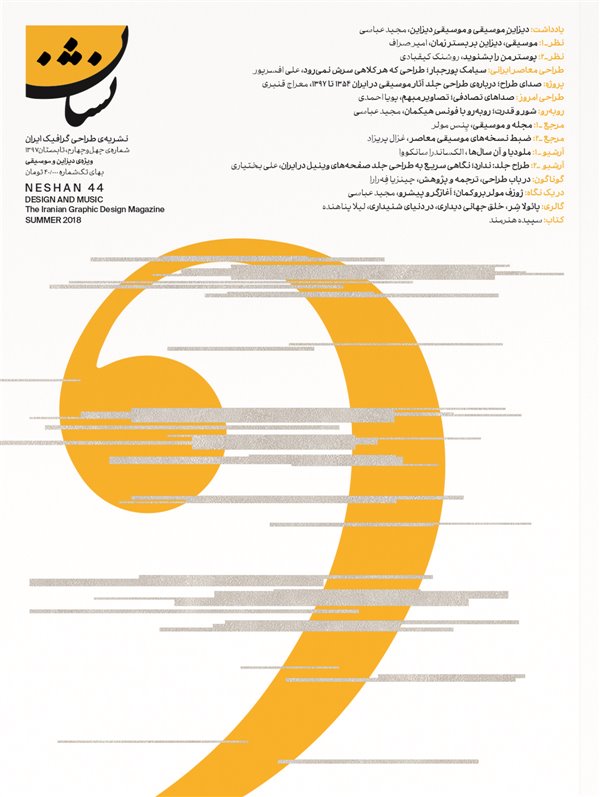
Reference-I
The Magazine And The Music
Jens Mueller
Today, twen is considered one of the highly influential works in the field of international editorial design. The German magazine published in a total of 129 issues between 1959 and 1971 inspired later masters of the field – from Herb Lubalin to David Hillman. When the magazine was launched in 1959 the success of the venture was far from safe. Young magazine publishers Adolf Theobald and Stephan Wolf financed the print of the first issue with a publishing house behind them, which was a most unusual thing back then. From the beginning twen was a hit and developed into the cult magazine for an entire generation of young post-war Germans. It addressed subjects such as free love, emancipation, or abortion for the first time, and wrote about them liberally. Next to this travel, fashion, literature and particularly music were the leading themes. Jazz had just become the „big thing“ for young Germans, so it is no wonder that a trumpet became the trademark of twen.
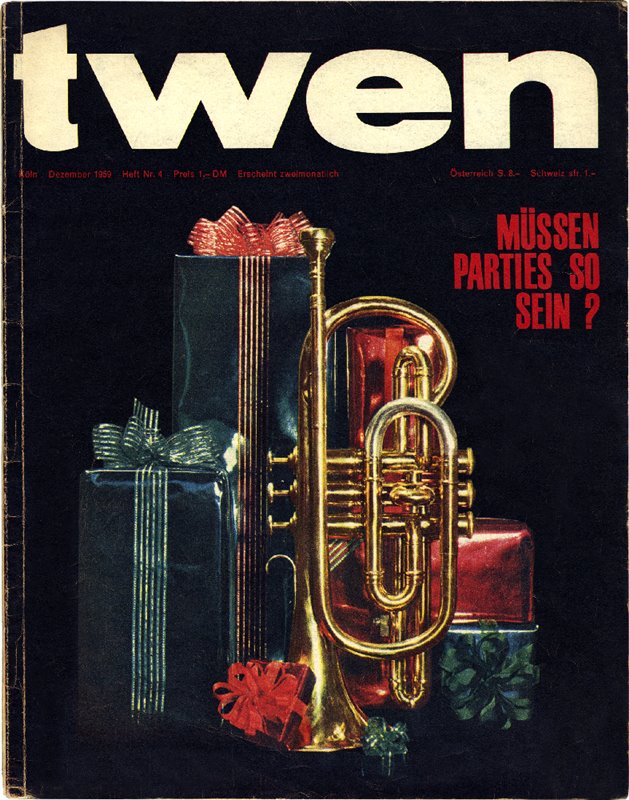 Willy Fleckhaus, Twen Cover, no. 4, 1959
Willy Fleckhaus, Twen Cover, no. 4, 1959
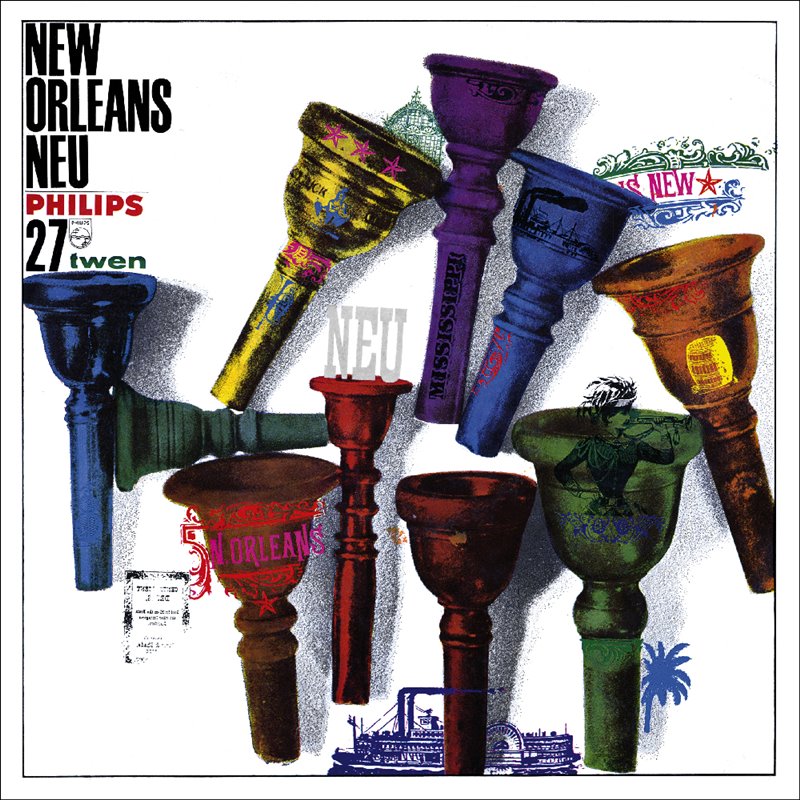 Günther Kieser, New Orleans Neu, 1963
Günther Kieser, New Orleans Neu, 1963
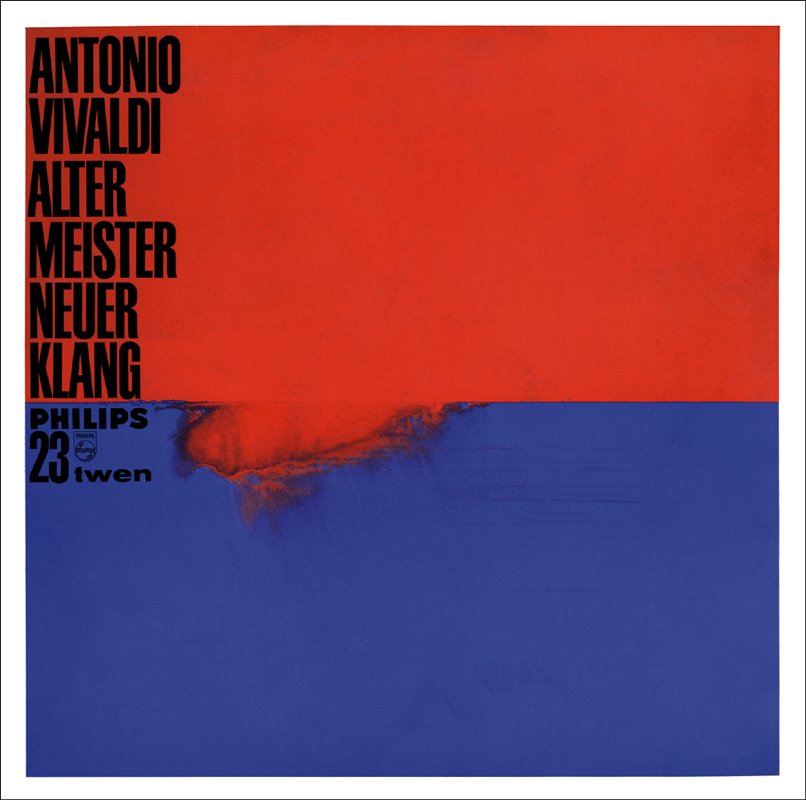 Hans Hillmann, Antonio Vivaldi, 1963
Hans Hillmann, Antonio Vivaldi, 1963
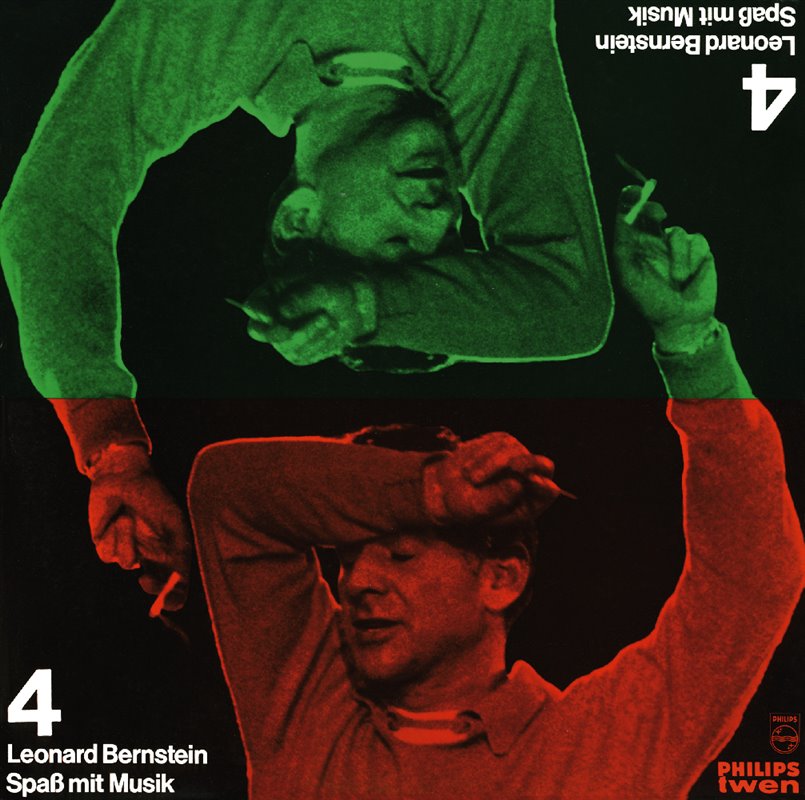 Willy Fleckhaus, Leonard Bernstein Spaß mit Musik, 1961
Willy Fleckhaus, Leonard Bernstein Spaß mit Musik, 1961
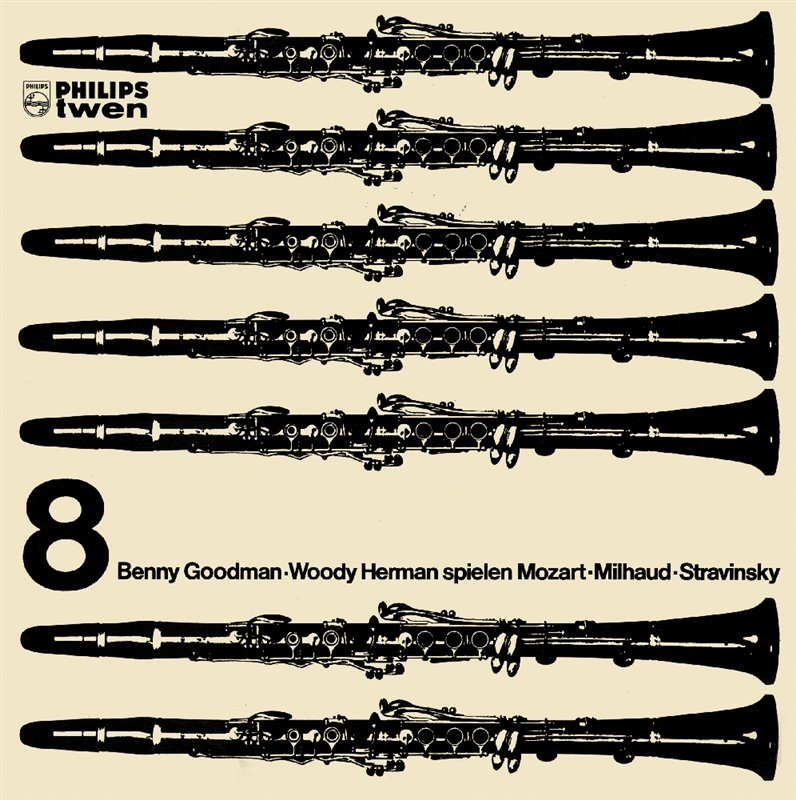 Willy Fleckhaus, Goodman & Herman plays Mozart-Milhaud-Stravinsky, 1962
Willy Fleckhaus, Goodman & Herman plays Mozart-Milhaud-Stravinsky, 1962
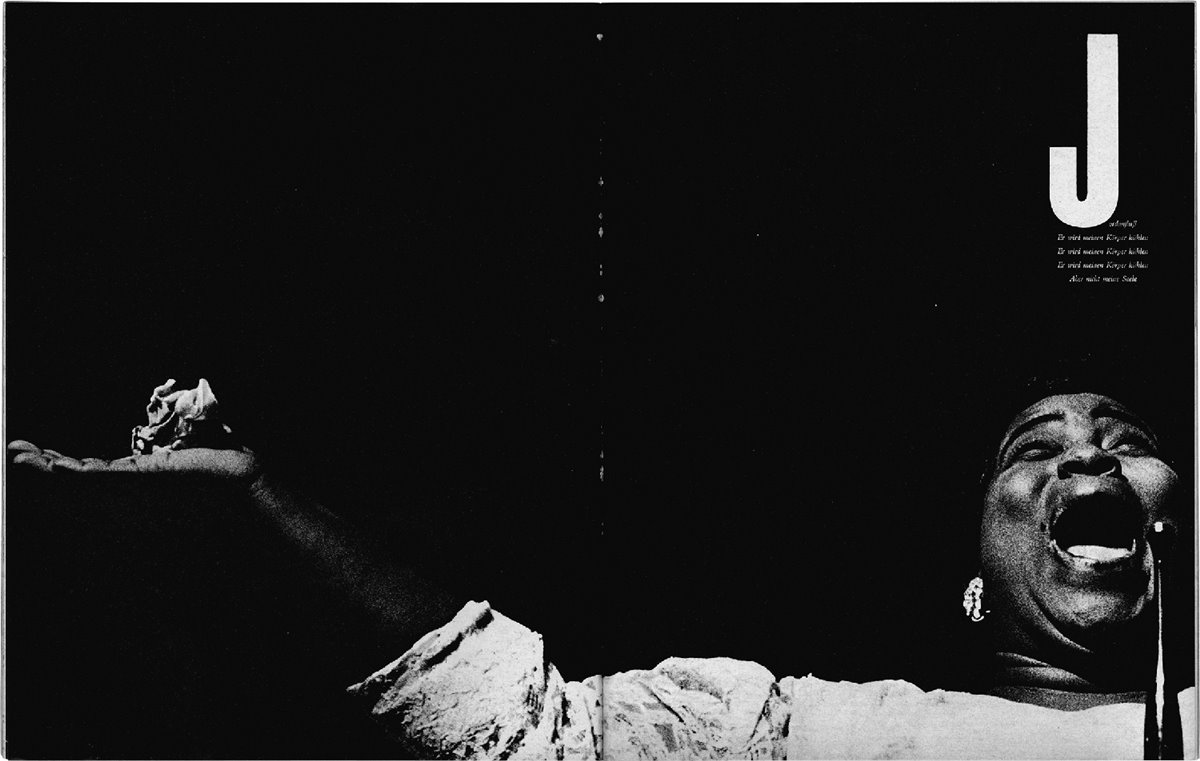 Willy Fleckhaus, Twen Spreads, 1961
Willy Fleckhaus, Twen Spreads, 1961
Graphic designer Willy Fleckhaus (1925-1983) was responsible for the editorial design and the overall style of the magazine. With his extraordinary aesthetic sense he created a revolutionary design, including the iconic black cover with the white masthead, that strongly stood apart from other publications. He selected the fresh typeface “Schmalfette Grotesk” [narrow bold Grotesk], designed by Walter Hättenschweiler in 1954, for all headings and created an unmistakable identity for “twen”. Just as important was his quality standard in terms of hiring the best photographers, graphic designers and illustrators from Germany to contribute to the monthly published magazine. Outstanding creatives such as photographers Will McBride or Charlotte March or illustrators such as Heinz Edelmann or Hans Hillmann were commissioned.
Lavish layouts played with type and image. Fleckhaus was one of the first to design issues with a deliberately chosen sense of drama for the sequence of pages. He played with picture details and picture sequences in such a masterly fashion that some critics saw the texts in twen merely as a “gray value”. But actually a lot of authors and journalists who were later to become successful were first published in twen. Though Fleckhaus, who sometimes worked as editor in chief, occasionally issued commissions with precise content prescriptions for layouts that were already complete—linking content and design was taken for granted. There is no doubt that the use of the basic grid on which all pages were based, now quite normal, was revolutionary at the time. Another novelty came from the United States, and Fleckhaus is still known for having introduced it to Germany: calling the main magazine designer “Art Director”.
But back to the music aspect: The journalist Joachim-Ernst Berendt (1922–2000) became the music editor of twen. Later called the “Jazz Pope”, Berendt was keen in writing about the most contemporary (and best) international music. Next to record reviews he wrote portraits on leading musicians in Jazz, Pop and Classic - including Ella Fitzgerald, Joan Baez or Juliette Greco. Long before imported records or even online music streaming became a common thing, it was a big task to get certain music recordings in Western Europe. So it was presumably Berendt’s idea to us the instant success of twen and its music-crazy readership to team up with a major music label and to start its own series of records. In September 1961 the so called “Philips-Twen” series was launched as a cooperation with the Hamburg-based record company Philips, a subsidiary of the Dutch tech-company. Recordings from abroad were re-issued for the German market and new LPs were produced specially for the Philips-Twen series. The release of each record were accompanied by background stories in the magazine.
The key feature of the series, once described by “Der Spiegel” magazine as a “comprehensive collection for discriminating record-players with a taste for the avant-garde,” was its enormous bandwidth (from jazz via pop to classical), and the courage to feature work by artists who were completely unknown at the time. The editorial board’s great discoveries included the Belgian chansonnier Jacques Brel and the Jewish singers duo Esther & Abi Ofarim, whose disc “Songs der Welt” became the most successful Philips-Twen issue.
Magazine designer Willy Fleckhaus was also responsible for the look of the record sleeves, and he extended the twen-style for the series. He took on the most exciting challenge, designing the front cover for the sleeves, personally at first, creating the first ten himself, and then operating as art director. A special series within the series were nine records issued in 1962 and 1963. They used quadratic works from the field of abstract art, created by contemporary artists such as Karl Gerstner, Verena Loewensberger as well as iconic masters of the field such as Max Bill and Josef Albers. Another sub-series which kept the Philips-Twen series vital, were ten records issued in 1965 and 1966 illustrated by Heinz Edelmann. He was also the leading illustrator of the magazine, which led him and his striking style to international fame and to the job as creative director of the iconic Beatles animation film “Yellow Submarine”, released in 1968.
At the same year a double sampler called “Happening in Music” marked the end of the successful series that had made it to about 70 records and sold a total of about half a million records. The printed magazine continued for three further years, before the twen-years finally came to and end, as the readership had become adult and turned to other magazines.
Jens Mueller
Born in Koblenz/Germany, 1982. Apprenticeship in advertising agency and printery. Diploma and Master-Degree in graphic design from University of Applied Sciences Dusseldorf. Since 2007 Designer of stamps for German Ministry of Finance. 2009-2012 partner of Müller Weiland design studio. 2013 Winner of international design 'Kieler Woche', with Karen Weiland. Since 2009 editor of A5 book series about graphic design history. Since 2012 Creative Director of optik design studio in Düsseldorf. Winner of national and international design awards. Author of several articles and books on graphic design history.
jens@optik-studios.de
Design for Music, Music for Design
Majid Abbasi
> more
Opinion-I
Music: Design Within The Context Of Time
Amir Sarraf
> more
Opinion-II
Listen To My Poster
Roshanak Keyghobadi
> more
Iranian Contemporary Design
Why Is A Raven Like A Writing Desk?
Ali Afsarpour
> more
Project
The Designer’s Voice, On Designing Record Covers In Iran, 1975 To 2018
Meraj Ghanbari
> more
Design Today
Indeterminate Sounds; Indefinite Images
Pouya Ahmadi
> more
Face to Face
Power And Passion; Face To Face With Fons Hickmann
Majid Abbasi
> more
Reference-II
Edition Of Contemporary Music
Gazelle Parizad
> more
Archive-I
Melodiya Of Those Years
Alexandra Sankova
> more
Archive-II
Cover Designer: N/A ;A Quick Glance At The Sleeve Design Of Vinyl Records In Iran Ali Bakhtiari
Ali Bakhtiari
> more
Different
Of Designing, Of Translating, Of Searching
Cinzia Ferrara
> more
Overview
Josef Müller-Brockmann; Initiator And Pioneer
Majid Abbasi
> more